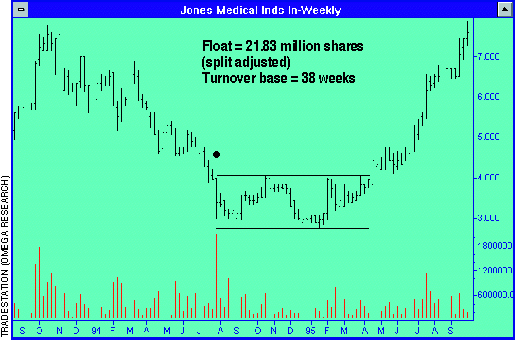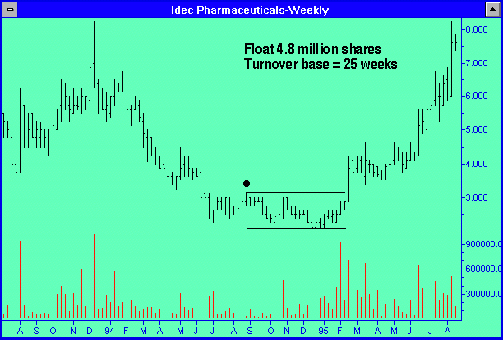
Here's a close look at the turnover of a stock's float, based on an idea from the works of W.D. Gann, that reveals some dramatic patterns and expands the definition of a base or consolidation zone."The floating supply of shares -- or simply, float -- is all of the shares actually available for trading by the public that are not owned by the company's management. This number can be incorporated into an understanding of the direct relationship between the stock price and its volume of shares traded. This is easily seen when a backward cumulative count of the volume is studied in relation to a stock's floating supply of shares. What emerges from this analysis are price-volume patterns that clearly show stocks forming bottoms, bases in a rising trend, and tops, as well as giving buy and sell signals."
TURNOVER
The turnover of the float is the approximate time it takes for the float to change ownership. For example, if a stock's float has 50 million shares actively trading and the volume for the last four weeks was exactly 50 million shares, then the float's turnover would be a four-week span starting from the current date and going back to the day when a cumulative total of the volume equaled 50 million shares.

"In the next five months, the stock went from the $6 range to the $11 range. This pattern of stocks going through one complete turnover right before their prices rise is not uncommon. Other examples to study that follow the same pattern are Idec Pharmaceutical Corp. (Idph) presented in Figure 2 and Greyhound Lines (Bus) in Figure 3."

Some stocks with a small float may take months or years to go through one complete turnover, while other stocks with large floats may have a rapid turnover in a matter of days.